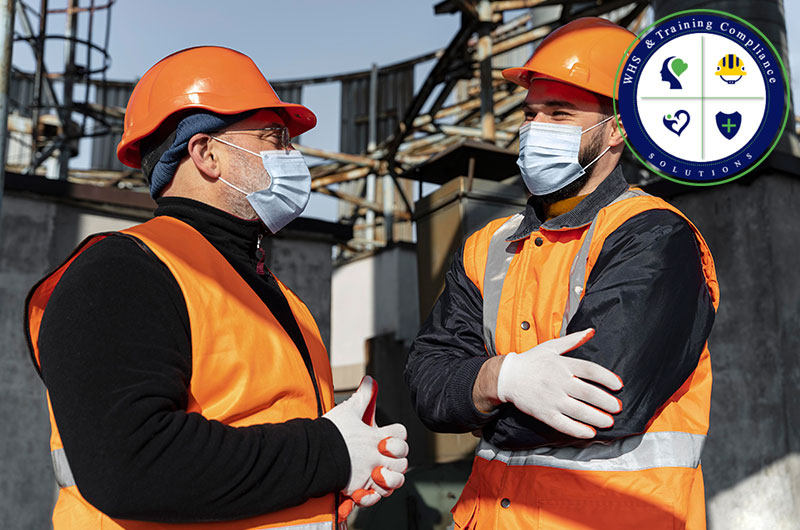The workplace health and safety are a set of protocols, policies, and plans that ensures proper workplace safety. The WHS management can reduce the risk of mental illness or injury in the workplace. It is more than just having a set of safety norms, as the organisation has to follow the norms mentioned in the WHS. The policies and procedures ensure that the organisation complies with the occupational safety and health management.
One of the key reasons to introduce WHS management is to identify and control the health and safety hazards in a workplace. It lowers the chance of incidents or accidents, boosting the overall safety levels in a workplace. The structured approach ensures that an organisation adheres to the WHS training and compliance rules. The vital components of the system are:
- Complying with Australian legislative norms and standards
- Increasing the productivity level
- Encouraging a safe workplace
- Improving workers’ mental safety
- Improving the bottom line of the business
These are the common goals to be accomplished by an organisation if they have to comply with WHS protocols.
Let us take you through how the management system works and the benefits of incorporating safety measures in your workplace.
How is a System-Based Approach Crucial for a Business?
The policies and procedures help ensure that safety regulations at complaint in an organisation. A systematic approach is necessary in a workplace because:
- The WHS system is changing and improving
- It uses feedback to manage and improve the safety outcomes
- It is built on the existing health and safety norms of an organisation
- It integrates with other management systems easily
- It helps with effective decision-making
- It fosters positive office culture
Therefore, it is crucial to know about the details of the safety management system and a guide on its use to ensure its proper use in a workplace.
What are the Key Areas of the WHS System?
A functional WHS management system includes the key components and helps maintain an efficient WHSMS. Every system should take the necessary steps to detail the outline in a structure. The key areas are:
- Safety plans and procedures
- Policies
- Training
- Monitoring
- Supervision
- Reporting
Organisations unite the safety plans to outline health and safety methods that comply with a specific workplace environment. By this, workers can learn the policies better. The rules help hold people accountable when something undesirable happens in the workplace.
Let us dive deep into the policies of the WHS management system.
Important Components of the WHS System
A good health and safety program is a necessity for most workplaces, and the vital components to include are:
- WHS Policy and Planning
WHS policy is the foundation that reflects the value system of an organisation. An effective plan includes measurable safety processes and ensures the allocation of the necessary resources.
- Risk Identification and Assessment
A proper identification process helps in site inspection, reporting incidents, and risk assessment. You can clarify priorities and plan to mitigate risks.
- Risk Control Strategies
Risk control norms should help to eliminate the organisational hazards and substitute them with safe alternatives. It is possible with administrative processes and protective equipment or tools that serve as protection of the workplace.
- Training and Awareness
An effective training procedure should help with WHS induction, training for tasks, and a refresher course. Some targeted programs include the standard Mental Health First Aid Australia course. It builds awareness and empowers employees to maintain workplace safety with confidence.
- Consult and Communicate
Incorporating safety measures into the workplace should start with consultation and open communication with your team. Organise meetings and forums to bring in more suggestions and what employees think of the safety measures required in the workplace. Here, feedback can refine the process better and foster a sense of shared workplace.
- Monitor and Assess
All these help better investigate incidents, and get to their root. Furthermore, implementation of appropriate actions helps track and prevent such future incidents.
The timely review can help ensure continuous improvement to bring in change in a workplace, and nurture a safe space. Collect data to know about valuable insights that need quick attention and change. This drives the need for a proactive management system to maintain a safe and healthy workspace.
How a Business Benefits from the WHS Management Process?
Implementing the WHS system is tough. An organisation cannot do without these as the safety measures are crucial to smooth business operations. A comprehensive WHSMS includes:
- Workers should be aware of safety and health needs
- Better management of WHS compliance fines
- Reduce the insurance premium owing to potential risks in the organisation
How can an organisation Benefit from Standard Mental Health First Aid Australia?
Employee training programs help participants to:
- Offer guidance and support to those suffering from mental health issues
- Identify signs of mental health problems among coworkers
- Encourage quick and early intervention of professionals as required
Such course training by certified professionals ensures that the safety measures align with workplace health and safety measures.
Some benefits of mental health first aid are:
- It helps with early recognition of anxiety, depression or suicidal thoughts
- It helps better cope with mental health, encouraging one to open up comfortably
- By giving an immediate response, one can empower staff to reduce a sense of isolation and gather confidence to fight out similar situations in the future
- It can integrate well-being practices better, as per the norms of the WHS system
This is how employees should know how to address psychological risks that hamper their well-being and productivity in the workplace. This shows the importance of including standard Mental Health First Aid Australia within the WHS framework for a holistic approach.
Practices to Ensure WHS Compliance In a Workplace
The major approaches for WHS compliance are:
Paper-based WHS compliance
It is the traditional approach, where documents are managed manually. It includes the safety checklist, risk assessment, incident reports, and compliance documents. This method is cost-effective and simple, but not free from human error.
Hybrid WHS Management
Here, both software and traditional ways are implemented for ease of work. In this, one can continue to maintain safety checklists on paper while using software to report incidents and ensure proper compliance tracking.
Software WHS System Implementation
It is the use of digital tools to automate safety and health management in an organisation. This is where a specialised WHS software can manage everything under one roof and help with real-time compliance tracking. This is how data analysis and reporting get easy, and offer better safety outcomes.
WHS Training and Compliance in a Workplace
Training and compliance are crucial to ensure that a workplace adheres to the protocols of the WHS management system. It helps foster workplace safety and well-being. Proper mental health first aid training, helping the employees know about the tools and steps to promote mental health safety in the workplace. Awareness ensures there is no lack of management commitment.
So, adopt a WHS system that includes prevention, training, and consultation. It is to show that the team understands the safety measures, beyond just checking the psychological well-being of employees. Proper implementation of the procedures ensures nothing hampers an effective WHS system in the workplace. Start by creating proper awareness and arranging for adequate training programs for the best results.













